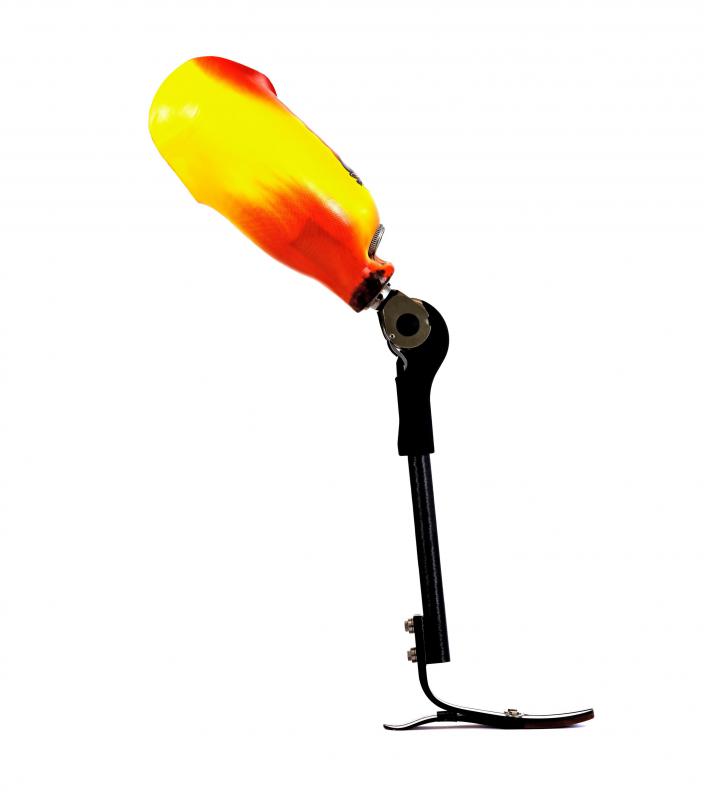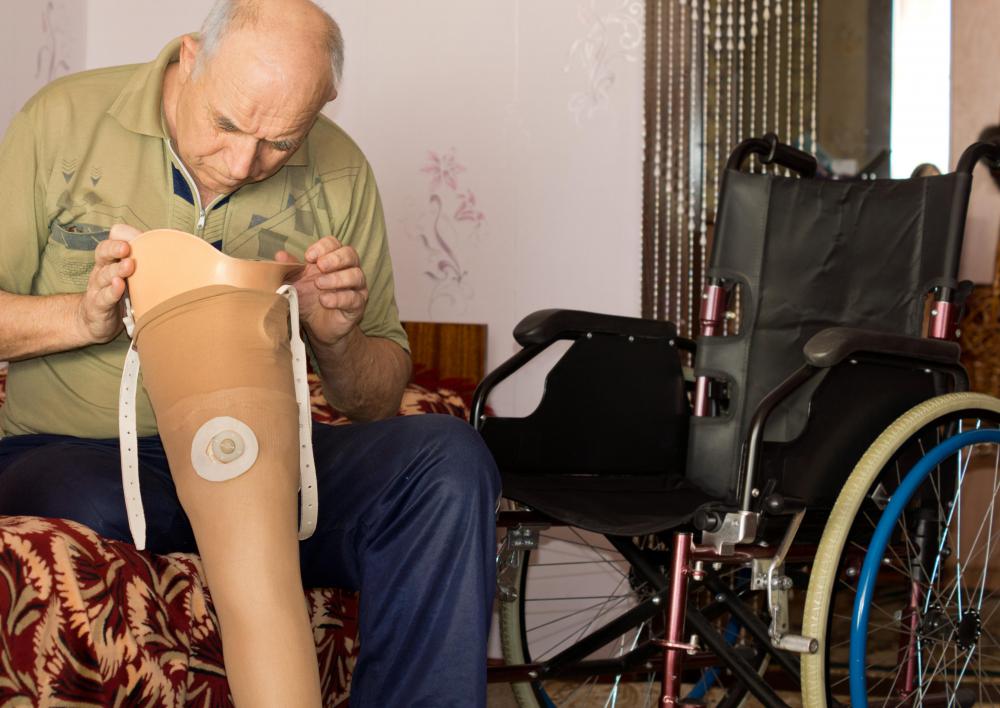At TheHealthBoard, we're committed to delivering accurate, trustworthy information. Our expert-authored content is rigorously fact-checked and sourced from credible authorities. Discover how we uphold the highest standards in providing you with reliable knowledge.
What Are the Different Types of Prosthetic Legs?
When a person has lost one or both of his or her legs because of a birth defect, illness, injury or other event, a doctor or specialist might recommend the use of prosthetic legs. These legs are worn to help the person regain functions that were performed by the lost limb or limbs and to keep him or her from having to rely on the use of a wheelchair or crutches. There are different variations of prosthetic legs; the most common forms of them are above-the-knee prosthetics and below-the-knee prosthetics. The type of leg a person will receive would depend on how much of the leg is missing.
Below-the-knee prosthetics are used when the patient has some part of the lower leg. Also called a trans-tibial prosthetic leg, it is designed so that the patient can place the part of the leg below the knee into the prosthetic and use the leg as though it was a full leg. This type of leg has a socket, shin and foot attached to make up for the missing part of the leg. Below-the-knee prosthetics are somewhat easy to handle for the patient because he or she has control of his or her knee.

An above-the-knee prosthetic is designed for a patient who is missing the majority of the leg, including the knee. Also called a trans-femoral prosthetic, it is designed to replace the socket, knee, shin and foot of the patient. Above-the-knee prosthetic legs can be a bit more difficult for the patient to maintain than the below-the-knee leg, because a patient using an above-the-knee leg has no knee of his or her own to help control the prosthetic. This type of prosthetic is much more expensive than a below-the-knee prosthetic because it has more functions.

For a patient who leads an extremely active life, a lesser-used type of prosthetic leg called a C-leg could be a better option. This type of prosthesis uses a hydraulic cylinder, is very costly and provides the patient with extreme mobility. It is programmable with different settings that allow the user to run, jog and even use roller skates. In some cases, disability insurance can help pay for the cost of prosthetic legs.
AS FEATURED ON:
AS FEATURED ON:















Discussion Comments
Running blades should be available for free to any of our veterans who lost a leg in service to our country, if they want them. That's the *least* we owe them. The very least.
Prosthetics in general have come a long, long way in the past several years. They look more natural and allow the amputee to get around much more comfortably, since they are made with lighter weight materials and better cushioning.
A man who goes to our church has a prosthetic leg. He does have a slight limp, but he doesn't allow it to bother him and goes fishing and hunting and generally enjoys life.
The first time I saw an amputee using the running blades, I nearly cried. It was so wonderful to see that man, running with an easy, natural stride, clearly enjoying himself and doing something he obviously loved!
The engineers who developed walking and running blades for these people should get the Nobel Prize for medicine, because of their huge contributions to the quality of life for these folks. It's just a shame most insurance doesn't cover the blades, like they do regular prosthetic legs. That's not right. So many people would have such good quality of life if they had access to these.
Post your comments